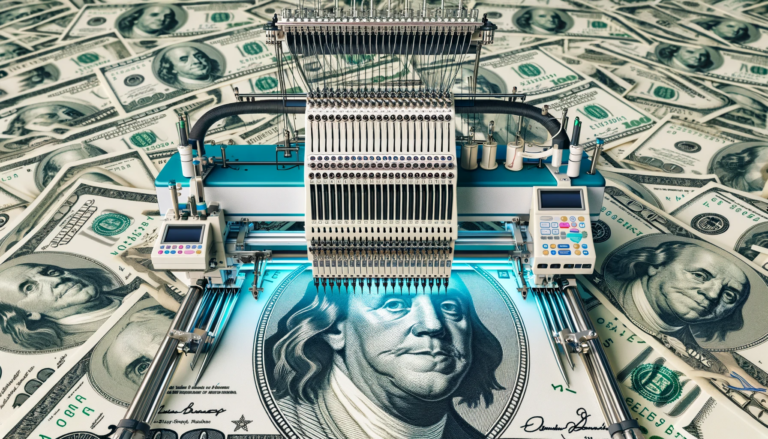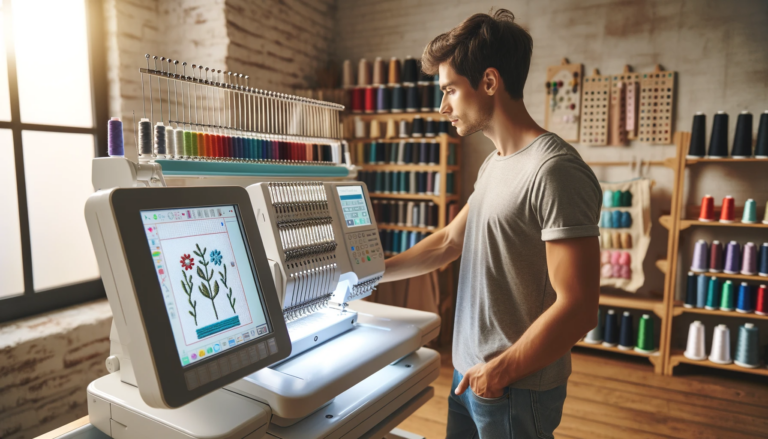Different Types of Embroidery Machines Compared
Each type of embroidery machine has unique features and is suitable for different needs. Understanding these differences is crucial when starting an embroidery hobby or business.
Read on to learn the differences between single-needle, multi-needle, and multi-head embroidery machines, helping you make an informed decision based on your needs!
Types of Embroidery Machines
Selecting the appropriate embroidery machine involves considering various factors, including budget, project type, space, and personal skill level. Each type caters to specific requirements, from hobbyists to large-scale commercial ventures.
1. Single-Needle Embroidery Machines
- User Base: Home-based enthusiasts and small businesses on a budget.
- Characteristics:
- One needle and thus requires manual color changes.
- These machines are cost-effective, making them popular among beginners and small businesses.
- Larger hoop sizes can be quite expensive, but machines with small hoop size are much more affordable.
- You can get a combination of sewing and embroidery machines, which save space.
- Portable, quieter, and easier to master–more suitable for those new to embroidery.
- Variants: Most are flatbed machines (not ideal for embroidering tubular items), but some of free-arm machines like the Brother Skitch or Brother PRS100.
- Limitations: Slower stitching speeds and difficulty with complex items.
- Availability: Easily found online and in craft shops.
2. Multi-Needle Embroidery Machines
- Target Users: Efficiency-oriented embroidery businesses.
- Advantages:
- Automatic color changes thanks to multiple needles. Reduced manual input increases efficiency.
- Can operate for longer hours, a key factor for busy embroidery businesses. Made with more metal parts, ensuring longevity.
- Easier for tubular embroidery (think t-shirts and onesies) and cap embroidery.
- Types: Ranging from semi-professional to full-industrial models.
- Cost Implication: Higher investment than single-needle machines.
3. Multi-Head Embroidery Machines
- Intended Users: Ideal for large businesses and bulk orders.
- Features:
- Simultaneous stitching with multiple units.
- Cost-effective for large-scale operations. However, these are the most expensive of the types of embroidery machines listed here!
- Requires significant space, typically outside a home and in a commercial setting.
- Operational Aspects: Consider scalability, maintenance, and setup services.
Practical Considerations Before Choosing a Machine
- Space: Assess the available space for the machine, especially for multi-needle and multi-head machines.
- Budget: Consider the initial investment and ongoing maintenance costs.
- Project Scope: Evaluate the types of projects you’ll undertake to determine the most suitable machine.
- Support and Training: Availability of local classes, maintenance, and support is crucial, especially for beginners.
Conclusion
Embroidery machines vary greatly in features and capabilities. Your choice should align with your embroidery goals, whether it’s a hobby or a business venture. Understanding each type’s advantages and limitations will help you make a decision that meets your specific needs and leads to successful embroidery projects.




